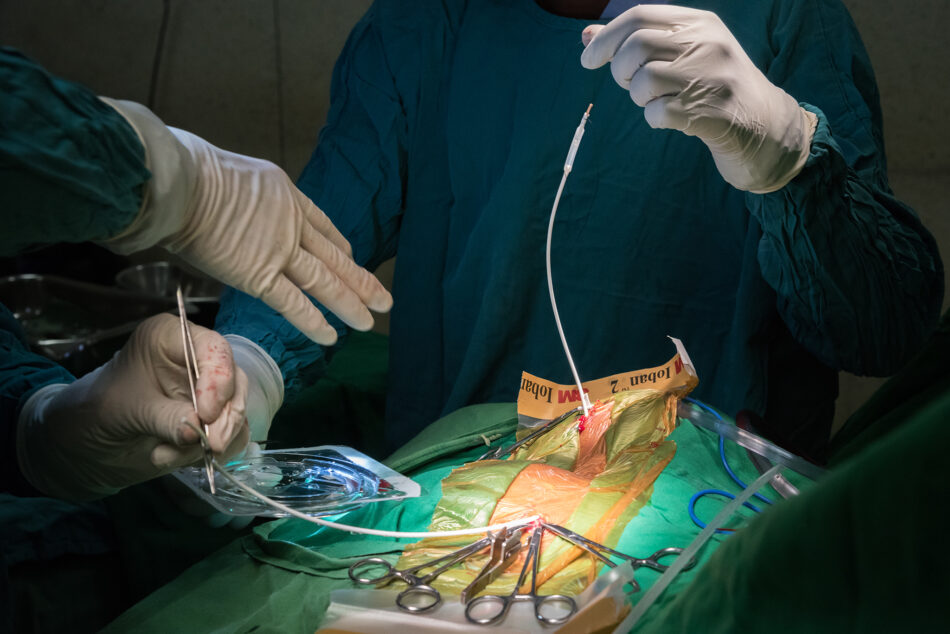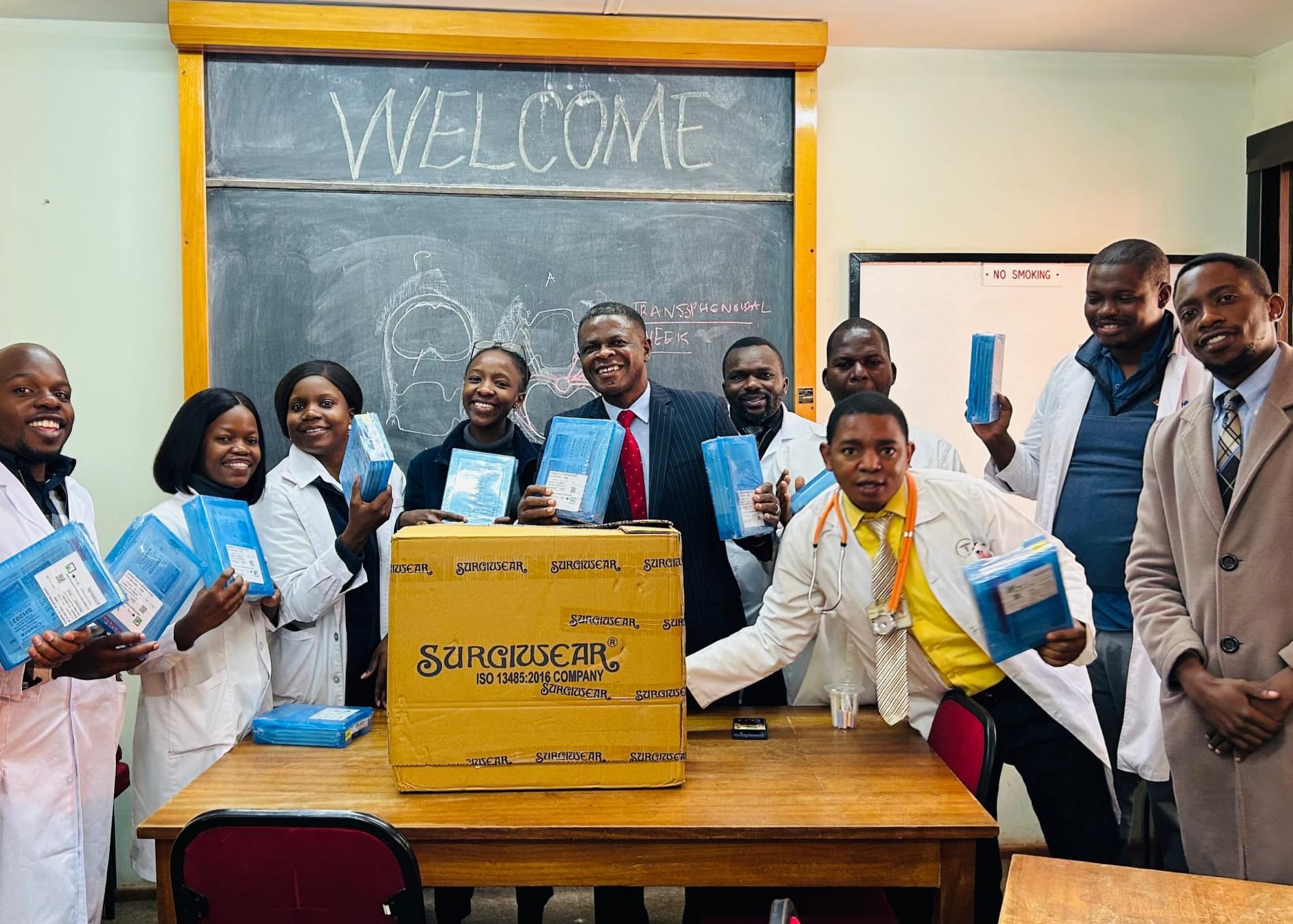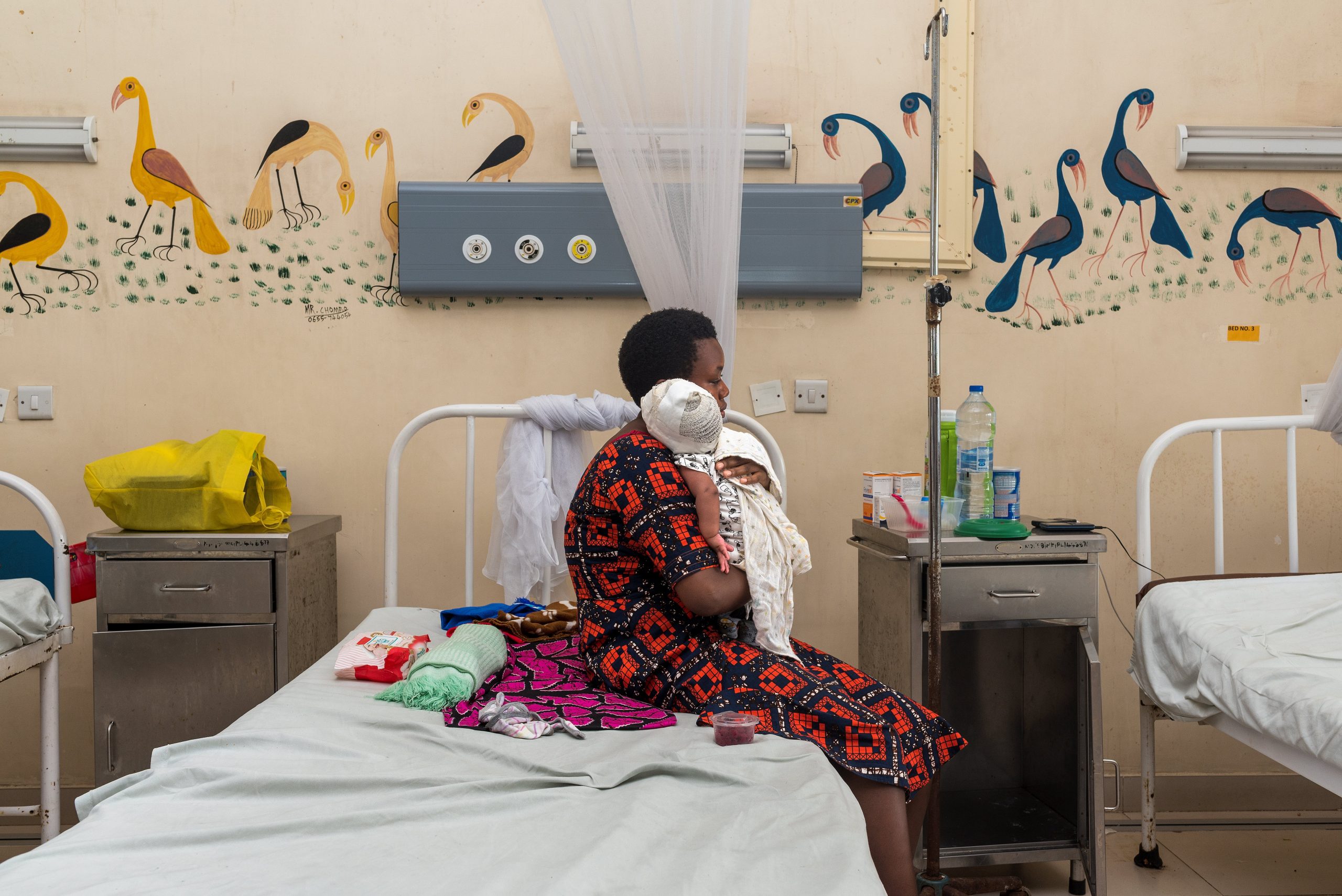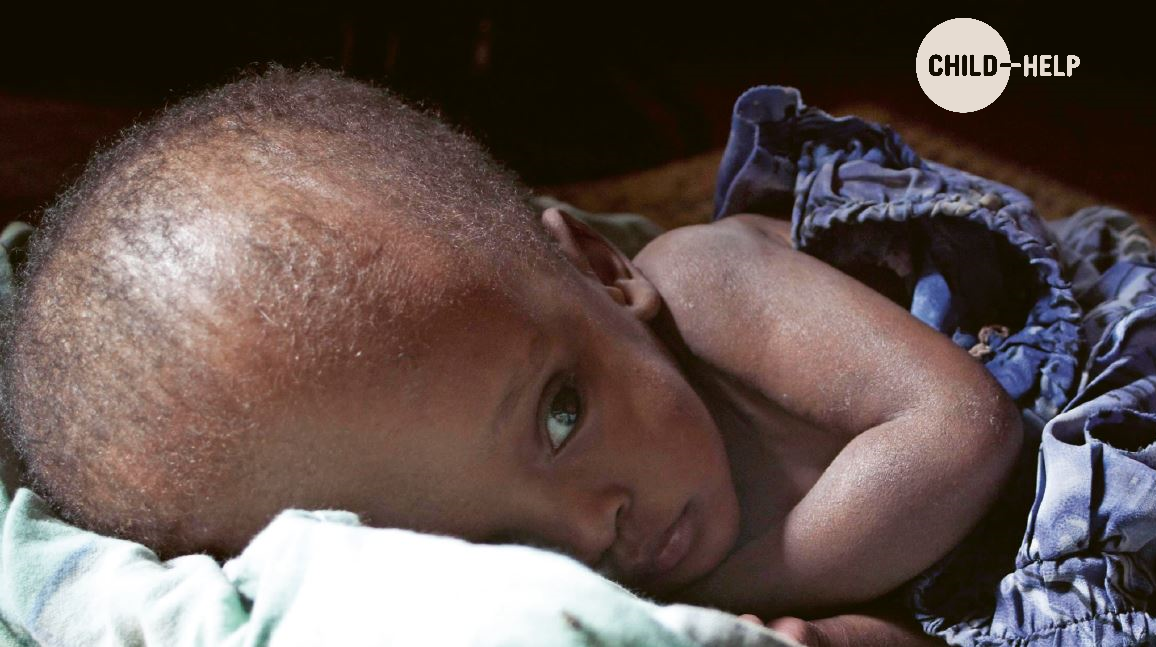A child with hydrocephalus needs immediate treatment and ongoing care to grow and develop free from pain.

Every year, between 600,000 and 900,000 new cases of hydrocephalus are diagnosed worldwide — most of them in the Global South.
Hydrocephalus occurs when cerebrospinal fluid (CSF), which the brain continuously produces, cannot drain properly.
The brain makes more than half a litre of CSF every day. Normally, this fluid is absorbed into the bloodstream.
If the drainage is blocked, the fluid builds up, causing the skull of a small child — still soft and flexible — to enlarge dramatically.
The resulting pressure can cause severe pain, seizures, blindness, or, in the worst cases, death.
In many countries of the Global South, the main causes of hydrocephalus include:
Hydrocephalus also often occurs as a complication of spina bifida.
Combined with a lack of medical infrastructure, these factors make access to treatment extremely difficult for affected families.
A shunt is a thin medical tube implanted under the skull to drain excess cerebrospinal fluid from the brain into another part of the body, usually the abdomen, where it can be safely absorbed.
This procedure relieves pressure on the brain, prevents damage, and allows children to develop normally and live without pain.
In high-income countries, a shunt can cost €800–1,600, far beyond the reach of most families in the Global South who survive on less than €1 per day.
To bridge this gap, Child-Help launched the Shunt Project, using the Chhabra shunt, produced in India at a cost of only €52.
Clinical studies show it performs as effectively as more expensive models.

Child-Help not only supplies affordable shunts to its partner organisations — we also train neurosurgeons locally to perform these life-saving operations.
This dual approach — providing materials and building expertise — ensures sustainable healthcare.
By training local surgeons, we reduce dependence on foreign specialists and strengthen national health systems for the long term.

In some cases, endoscopic third ventriculostomy (ETV) can replace shunt surgery.
This minimally invasive method creates a natural bypass inside the brain, allowing fluid to drain without an implanted device.
ETV can provide a permanent solution without the risk of infection or shunt failure — but it is only suitable for certain types of hydrocephalus.

Every donation to Child-Help gives a child access to life-saving surgery and post-operative care.
Although the procedure itself is straightforward, challenges such as infection risk remain high in low-resource settings.
Child-Help works closely with local hospitals and medical teams to improve hygiene, provide follow-up care, and ensure the best possible outcomes.
With your support, we can continue helping children who would otherwise have no chance of a healthy future.

Together, we can create lasting change — not only by providing shunts but also by empowering local doctors and building sustainable healthcare systems.
💚 Every donation counts — and every shunt can save a life.
